BRAIN DAMAGE. Well-executed and distinctive body horror
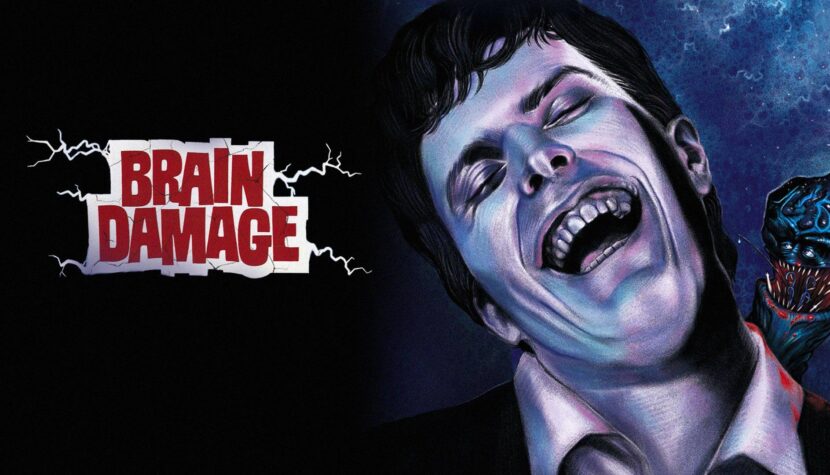
Brian (an obvious anagram of the word brain), an ordinary guy in his twenties, falls victim to Aylmer – a creature resembling an avant-garde toilet brush, inspired by the shape of a penis and a brain. The creature is intelligent and speaks with a velvety voice. It injects a blue liquid from its body directly into Brian’s brain. Brian experiences intense hallucinations resulting in partial memory loss. From now on, he will demand regular trips. Little does he know that when he is “heated up,” Aylmer attached to him devours people’s brains.
The director of Brain Damage, Frank Henenlotter, is currently a recognized expert in niche cinema marked by flowery aberrations. It is enough to say that his latest narrative film (so we omit the documentary That’s Sexploitation! about joyfully obscene and brutal images), Bad Biology, dealt with the sexual relationship of a multi-vagina nymphomaniac and a man who became unnecessary to his member, living his own life.
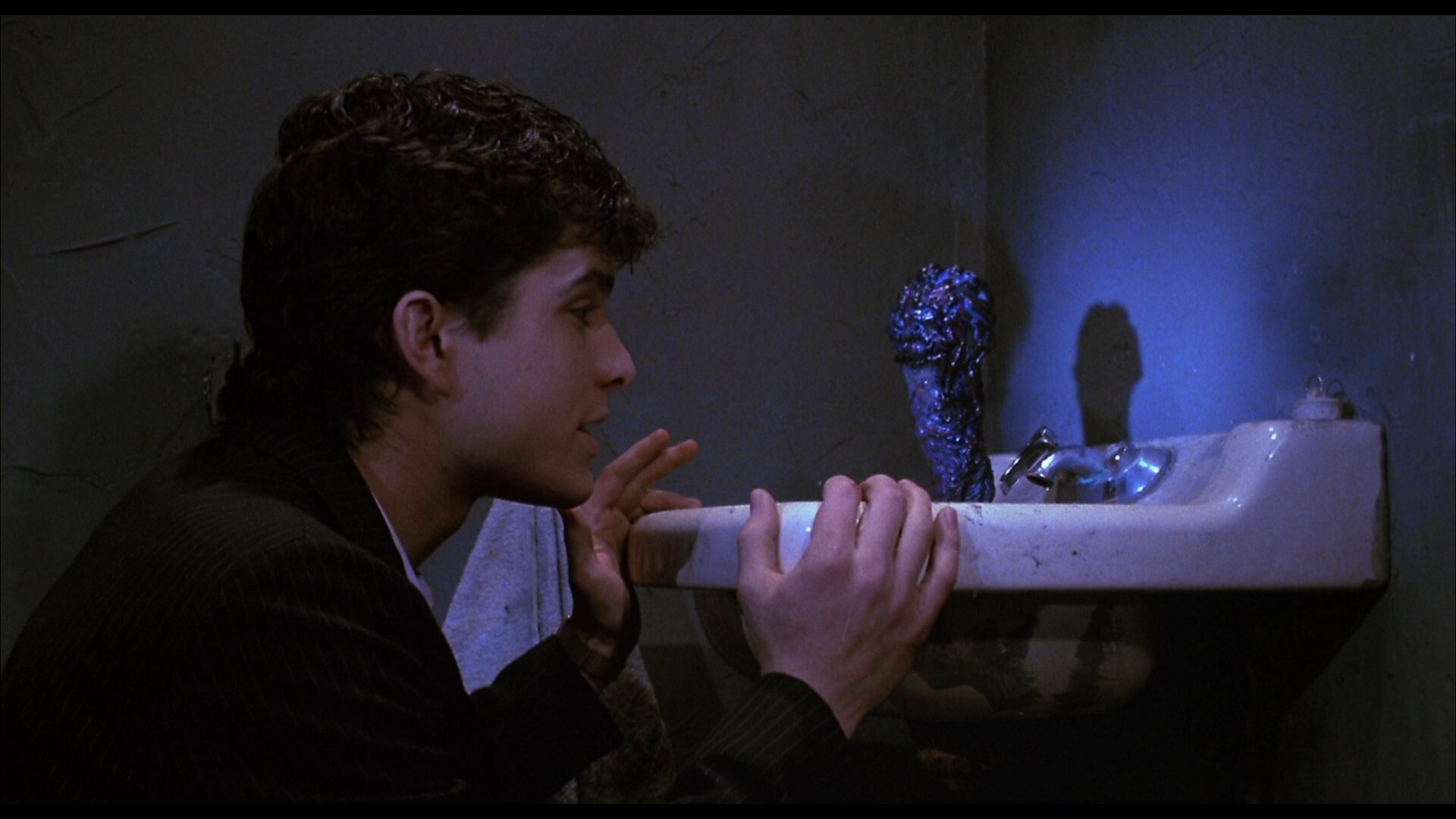
Henenlotter debuted with Basket Case. It was a low-budget title. The story of surgically separated Siamese twin brothers, one of whom is deformed and transported in the titular basket by the other. The production – with sharp but tacky gore scenes and exaggerated acting – was seen as a comedic whim. However, the toxic relationship of the brothers, portrayed against the backdrop of stuffy and shabby interiors, also offered a lot of genuine darkness. After years of midnight screenings in New York theaters, the film solidified its status as a cult work for the chosen few. Did Henenlotter decide to remove the part of his brain responsible for the love of films featuring quirky abnormalities and take on The English Patient? No. He made Brain Damage – another ode to deformities.
Visually, the film is not as rough as Basket Case. Six years after his debut, the director opted for solid cinematography dominated by the color blue. It’s probably not the case that Michael Mann is now watching Brain Damage every week, looking for thrills and inspiration, but the well-handled camera takes us rather into “strange and surreal” regions than adhering to the principle: “as long as the actor’s head is in the frame.” This does not mean that we won’t see cheap hotels, dirty staircases, junkyards, or backyards here. Henenlotter made a night film filled with the dark charm of non-representative locations in New York, through which he moves with evident delight. Additionally, he saturates his title with allusions to the alternative world. The protagonist attends a punk-goth concert, and in his room, there are posters of the electro-punk band Suicide or the more popular Bauhaus. We’re in the ’80s; dark and somewhat rough, but still in the ’80s. Those who appreciate the era for its punk flair should feel very comfortable during the screening. The music written specifically for the film is also decent. It is a simple electronic sound that may be reminiscent of Tangerine Dream and, at times, also recalls the main theme from The X-Files. It effectively enhances the atmosphere of coldness and mystery.
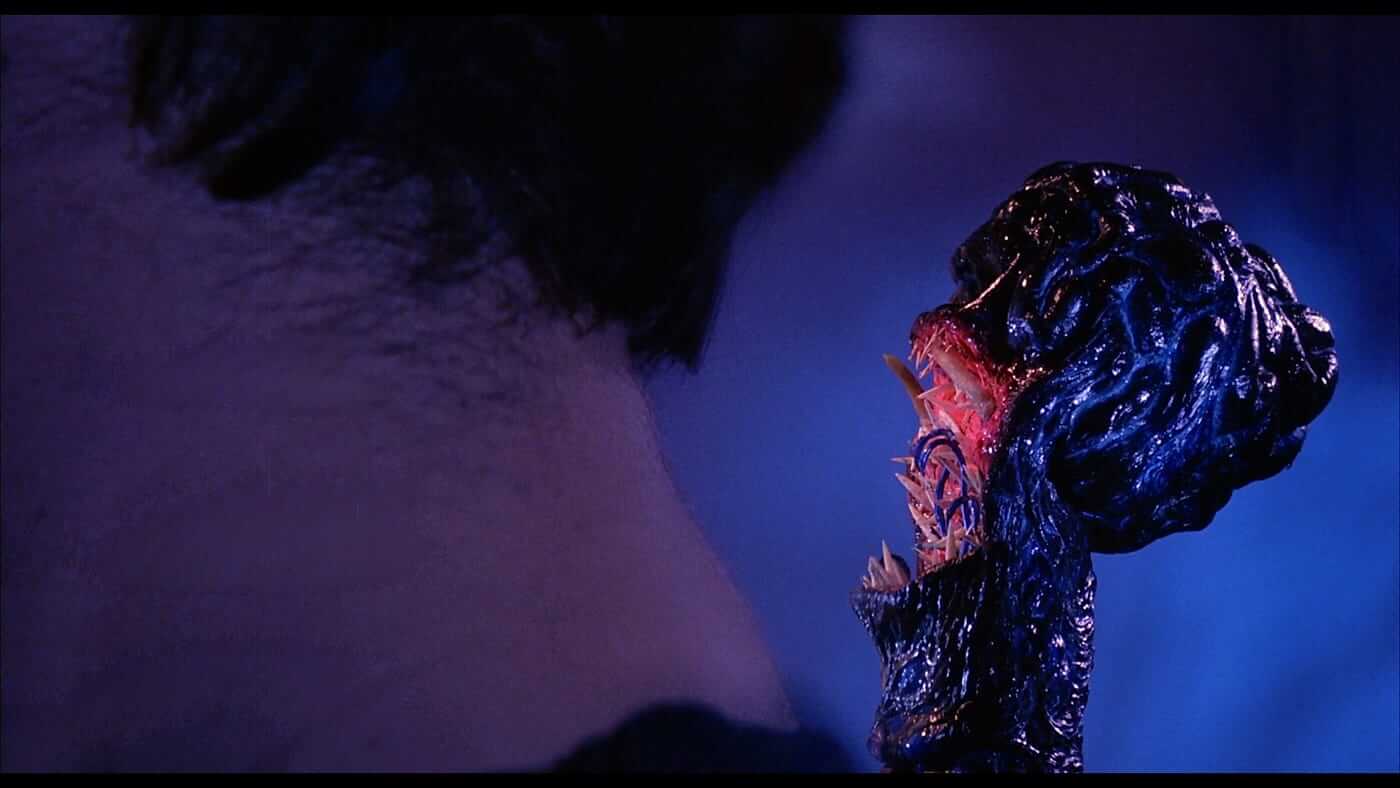
Rick Hearst, playing the main character of Brain Damage, may not create a poignant performance, but he accurately conveys Brian’s physical and mental breakdown. He is lively and natural in the drug-induced scenes. Similar to Bruce Campbell from the Evil Dead series, he has a cartoonish expression, large eyes that squint angrily and fearfully. He handles bleeding, screaming, and convulsions well. The rest of the cast performs rather palely or semi-amateurishly, which does not interfere with the viewing experience. Although it must be admitted that Aylmer’s suggestive voice is impressive… as is his entire character.
This animatronic special effect – small, remotely resembling the Muppets – can be unsettling. Sure, to some extent, the viewer keeps a distance from such a unreal “bad guy,” but certain shots of his shiny skin, small teeth, or the twisted look of button-like eyes make us see a real representative of the dark world in him. And, I’ll repeat, this effect contributes to his soft voice, initially resonating joviality and then calculating intelligence. The fact that 30 centimeters of some lifeless matter gained a mysterious and unconventional personality here speaks volumes about the creators’ skill.
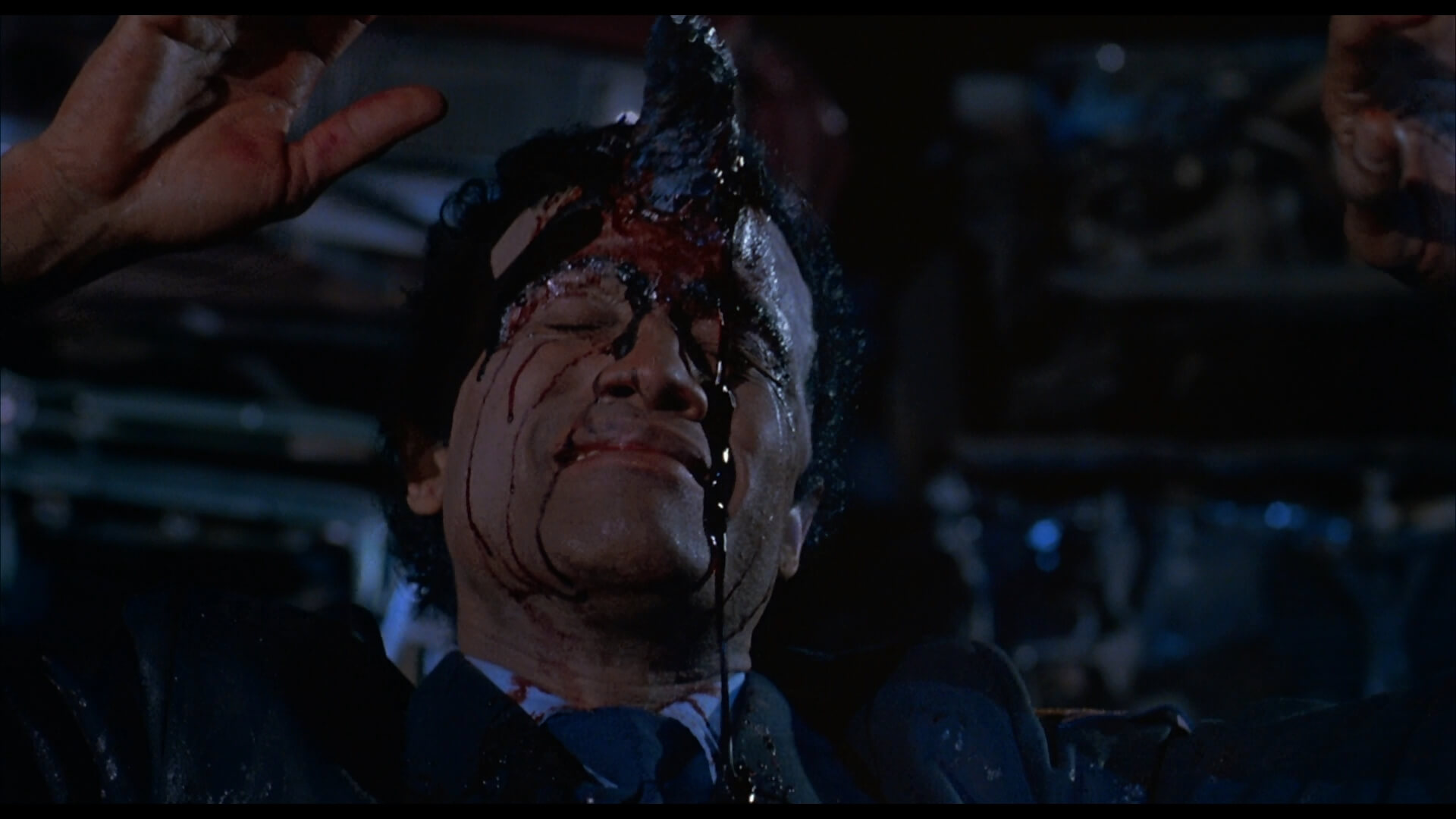
The handmade effects of Brain Damage are also impressive, which are close to the aesthetics of Videodrome by Cronenberg. Brains pulsating on a plate with pasta, pulling a long organic cord “something” out of the ear, or sucking out the contents of human heads by Aylmer are body horror at a genuinely high level. The frames filled with a blue glow, emphasizing Brian’s loneliness, which pales, distances itself from the world, and craves only drugs, also smell of Cronenberg. Aylmer also somewhat resembles the parasites from Scanners by Cronenberg. Scenes illustrating trips are not particularly imaginative – disco lights here and there – but organically stick with the rest of the film.
The creator of Basket Case does not go all the way into comedy or horror. He operates in genre registers close to both, but creates an unexpected film, as if he wanted it to be alternative and disturbing above all. Disturbing not only when someone suddenly jumps in front of someone’s face but because the viewer has no permanent support in any convention. Genre labels are, in fact, rather a prop for the reviewer than the creator, who, from a large teaspoon, sacrifices cinema turned and produces things… simply Henenlotteresque. This is emphasized by placing a nice touch for fans of his first film in Brain Damage...
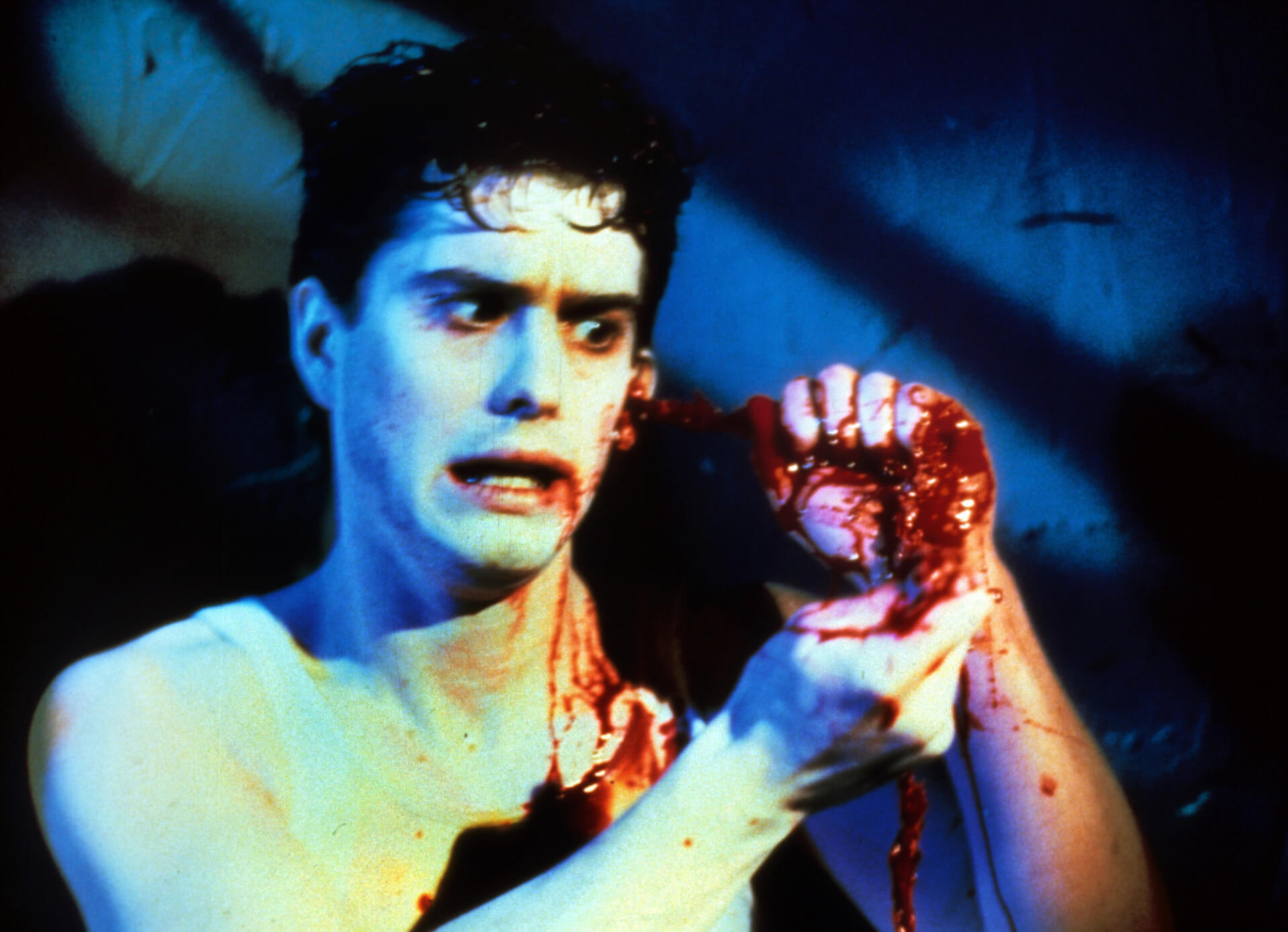
For me, the biggest surprise is that despite the absurd starting point, which could easily lead us towards Toxic Avenger-style cinema, the film remains, to some extent, a serious, weighty story about addiction. Not only to substances; Aylmer and Brian create a toxic symbiotic relationship, somewhat similar to what we saw in Henenlotter’s debut. Despite the eccentricity of the material, we suspend disbelief in this world. We sympathize with Brian, believe in the existence of Aylmer, and immerse ourselves in the strange fluids of their relationship.
This is not a film so bad that it’s good. I’ll go further; it’s not bad at all. It just worked. It is well-executed, has a distinctive atmosphere, and rises significantly above cheap productions about a killer pile or a crazy gingerbread man. It’s just a highly specific, non-negotiating film with viewer habits, proudly presenting its distinctiveness. Henenlotter won’t ask you to embrace his vision – either you buy it, or you quickly turn it off.
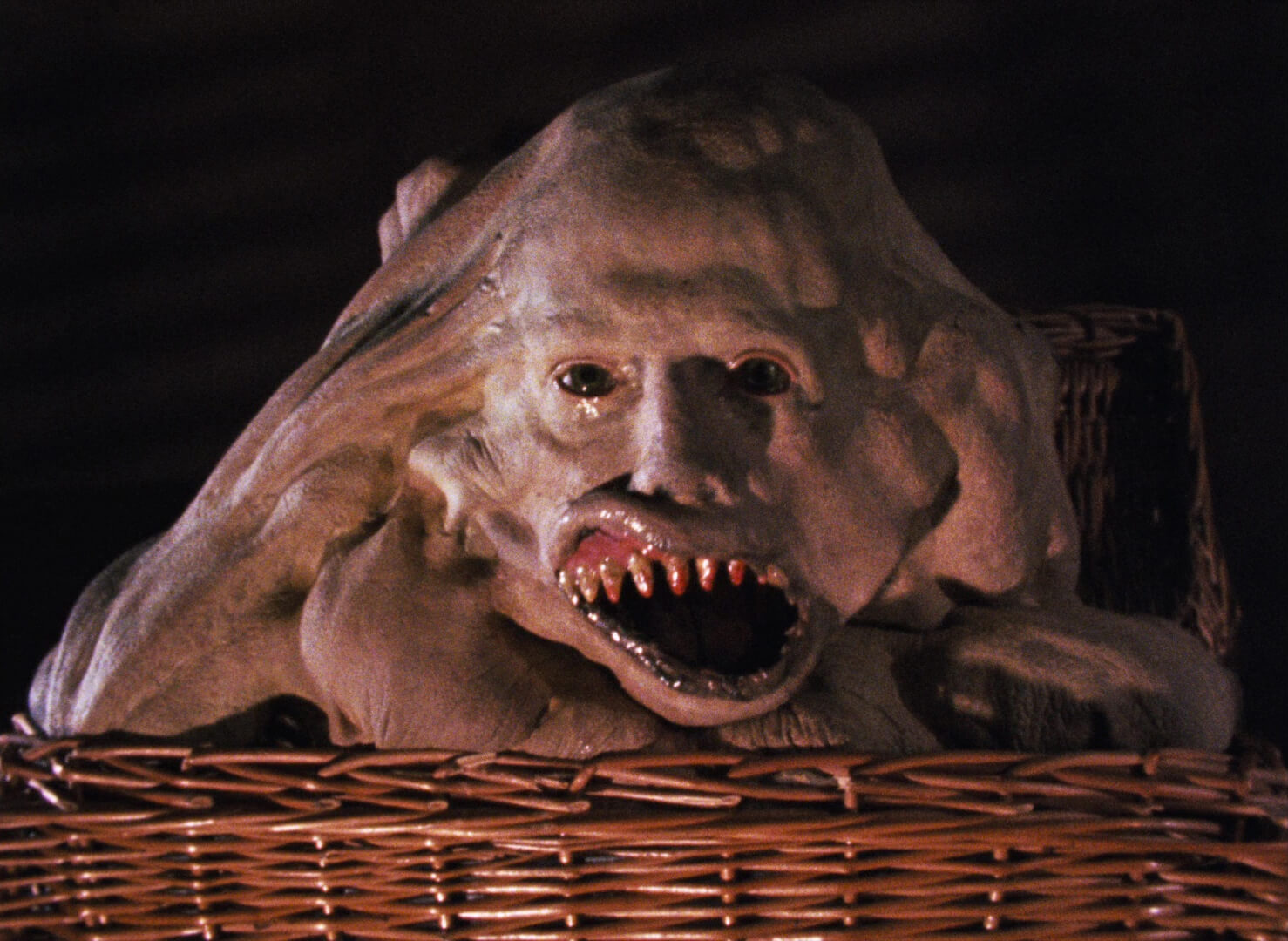
The director of Brain Damage did not have the luck (?) of Sam Raimi or Peter Jackson, who broke out of the niche for horror maniacs towards dull blockbusters. He himself made a few more films, including sequels to Basket Case or Frankenhooker. If his productions have found a place, it’s at festivals of strange cinema or in the consciousness of connoisseurs of the subject. Brain Damage, along with the director’s debut, belongs to his most interesting achievements.”

